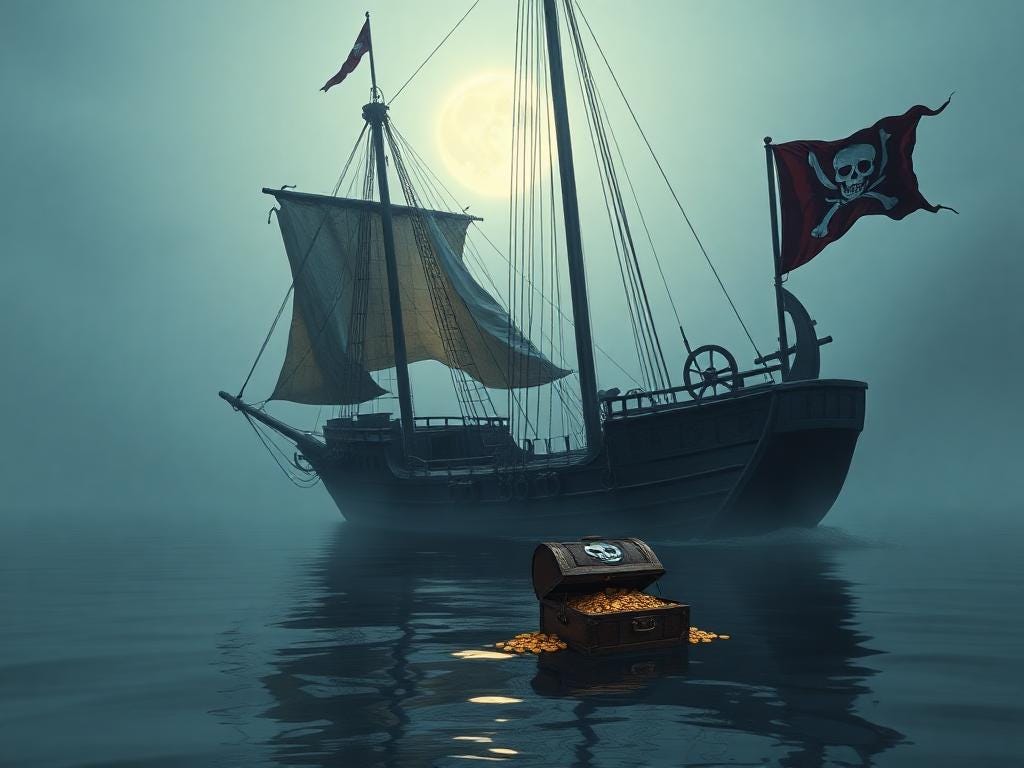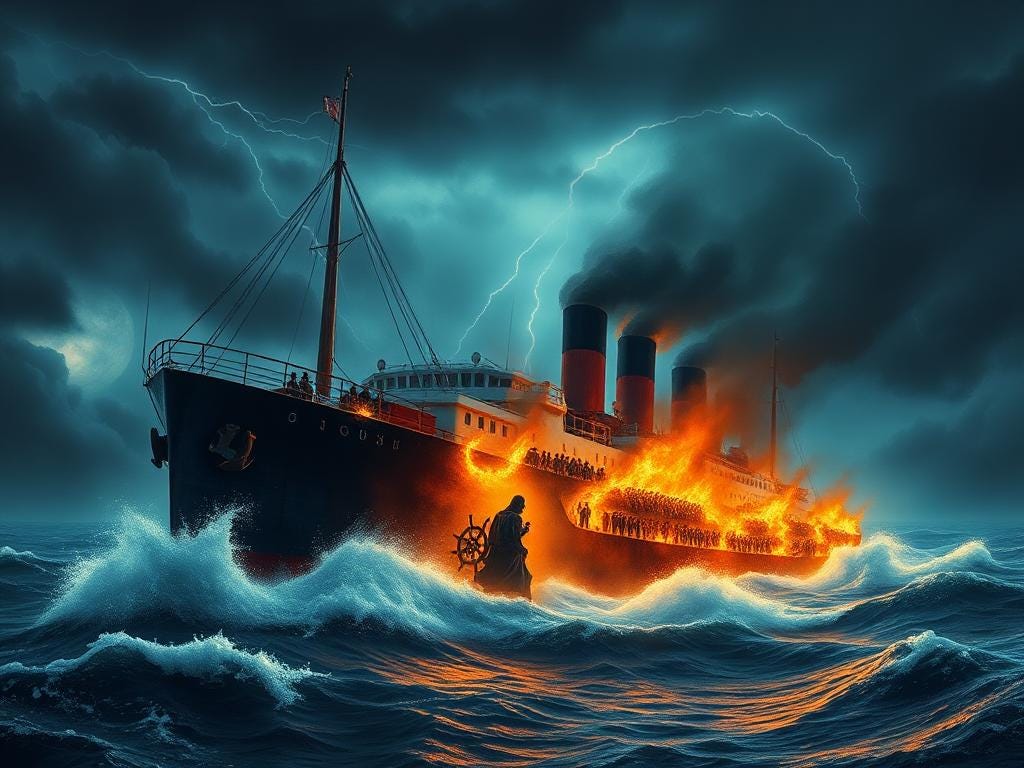Ahoy, landlubbers and curious minds! Picture this: You’re sipping coconut water on a pristine beach in Palawan, Philippines, when a shadowy vessel drifts into view. No crew. No cargo. Just a ship so eerily empty, it looks like the maritime version of a bad Tinder date—there one minute, ghosted the next. Welcome to the baffling world of Ghost Ships of the South China Sea, where abandoned hulls bob like forgotten leftovers in history’s most enigmatic maritime buffet.
But why should you care about floating hunks of metal and wood? Because these ships aren’t just rusting relics—they’re time capsules of piracy, smuggling, and maybe… dramatic pause… supernatural shenanigans. Grab your metaphorical life jacket, and let’s dive into the abyss.
What Exactly Is a Ghost Ship?
A “ghost ship” isn’t just a boat with a Casper-the-Friendly-Seagull vibe. It’s an adrift vessel, devoid of crew, often with no clear explanation. Think of it as the ocean’s version of that one sock that vanishes in the dryer—except with more cannons and fewer lint traps.
The South China Sea, a bustling highway for 30% of global trade (and 100% of maritime drama), is ground zero for these mysteries. From ancient junks to modern cargo ships, its waters have swallowed crews and spat out enigmas. Let’s chart the weirdest tales.
The OG Ghost Ships (Or, When Ancient Sailors Blamed the Gods)
Long before GPS and “check engine” lights, Southeast Asian sailors swapped stories of phantom vessels. The Orang Laut (Sea Nomads) of the Malay Archipelago whispered about kapal hantu—ghost ships manned by spirits of drowned fishermen.
The Legend of the Balangay
In pre-colonial Philippines, the balangay boats ferried warriors and traders. But folklore tells of a cursed balangay that vanished in the Sulu Sea, reappearing centuries later… with skeletons still gripping their paddles. Spooky? Absolutely. A great campfire story? Even better.
Pirates, Smugglers, and Insurance Fraud (Oh My!)
Fast-forward to the 18th century, when the South China Sea became the Wild West of the waves. Pirates like Cheung Po Tsai—a real-life Jack Sparrow with better PR—terrorized ships. But sometimes, pirates weren’t to blame.
The Mystery of the Sam Ratulangi PB 1600
In 2019, this Indonesian cargo ship was found drifting near the Philippines. The crew? Gone. The logbook? Blank. The engine? Still running. Conspiracy theories ranged from North Korean hijackers to aliens (because why not?). The truth? Likely a hijacking gone wrong. But where’s the fun in that explanation?
Tip for Aspiring Pirates: If you’re going to steal a ship, maybe don’t leave the engine on. Just saying.
The Supernatural Files (Or, Why You Shouldn’t Sail After Midnight)
Now, let’s address the elephant—or should I say, ghost—in the room. Are these ships haunted? Let’s consult the two most infamous cases:
The SS Ourang Medan
In 1947, a Dutch freighter near Sumatra sent a chilling SOS: “All officers dead. Entire crew dead.” Rescuers boarded to find the crew’s faces frozen in terror, no visible wounds. Then… BOOM. The ship exploded. Theories? Alien gas. Cursed uranium. Or, as skeptics argue, a badly ventilated cargo of potassium cyanide. (But honestly, “alien gas” makes for better merch.)
The MV Alta
In 2020, this “zombie ship” washed up in Ireland—8 years after it was abandoned in the South China Sea. How’d it cross two oceans unmanned? Ocean currents? Ghosts practicing their sailing license? We may never know.
Local Lore Alert: Filipino fishermen still swap tales of the Santelmo, fireball spirits that lure ships onto reefs. Coincidence? Or proof that the South China Sea is Mother Nature’s haunted house?
Modern Mysteries (Yes, This Still Happens)
Ghost ships aren’t just relics—they’re a modern headache. In 2020, a “fleet of death” of over 200 abandoned tankers idled off Singapore. Why? A mix of COVID chaos, shady owners, and a dash of “let’s pretend this isn’t happening.”
The Case of the Lyubov Orlova
This Russian cruise ship, abandoned in 2010, became the Most Haunted Ship on Airbnb (not really, but it should). Equipped with a tracking collar (yes, like a wayward pet), it vanished in the Atlantic in 2013. Last detected near Ireland, it’s either at the ocean’s bottom or hosting a secret ghost rave.
Why Should We Care? (Besides the Obvious Bragging Rights)
Ghost ships aren’t just spooky—they’re environmental time bombs. Leaking fuel, invasive species, and illegal fishing vessels masquerading as “abandoned” threaten marine ecosystems. Plus, they’re a literal roadblock for shipping lanes.
But let’s be real: We’re here for the mystery. The South China Sea’s ghost ships remind us that even in our GPS-tracked, satellite-surveilled world, the ocean keeps its secrets.
The Big Question: Are Ghost Ships Supernatural… or Just Super Lazy?
Science says: Mostly mundane. Storms, piracy, and insurance fraud (looking at you, sketchy shipowners) explain 90% of cases. But what about the other 10%? The blank logs? The crews vanished mid-meal?
Oceanographers shrug. Marine archaeologists mutter about “unexplained phenomena.” And us? We’ll keep side-eyeing the horizon, wondering if that shadowy speck is a container ship… or Davy Jones’ Uber.
Your Turn, Detective
Alright, crew—here’s your challenge:
Heard any local ghost ship legends? (Grandma’s “cursed canoe” story counts.)
Drop your answers in the comments—and remember: If you ever sail the South China Sea, maybe pack a crucifix. And a fire extinguisher.
P.S. If you enjoyed this deep dive into nautical nonsense, smash that subscribe button. Otherwise, we’ll send the Santelmo to your inbox.
If you found value and enjoyment in this article, consider supporting me through BuyMeACoffee. Your support helps me create more insightful and interesting content. Thank you so much 😊…









